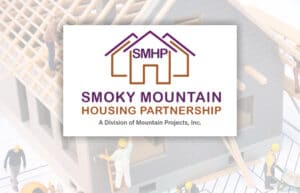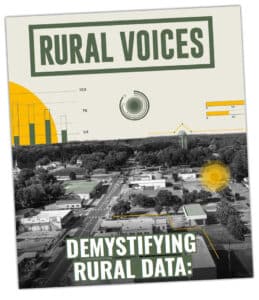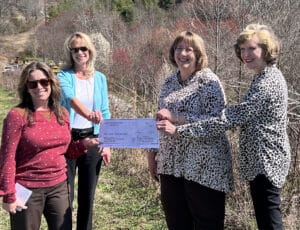Jennifer Sanner was in her young 40s when life threw her a curveball. She went from a married homeowner to a single mom renting an apartment, hoping it would only be temporary. But now, 13 years later, she’s still renting and laments that her college-bound son will be saddled with years of student loans — something she could have helped him with if her $1,000-a-month rent had instead gone toward a mortgage all these years.
“I would much prefer to own and have some equity later on,” said Sanner, who manages accounts payable for Silver Bluff, a long-term care and assisted living facility in Bethel. “But I’ve never found anything I could afford.”
Her challenge isn’t unique to those in the healthcare sector.
“I know paramedics who work two fulltime jobs just to be able to afford their house,” said Becky Justice, a nurse at Harris Regional Hospital in Sylva.
Justice has dedicated her life to caring for others in the community she was born and raised in Sylva. As a CNA, a paramedic and now as an ER nurse, she’s witnessed many of her younger co-workers struggle to put down roots, however.
“People are going to get their initial training here and then move on,” Justice said.
“I know paramedics who work two full time jobs just to be able to afford their house. People are going to get their initial training here and then move on.”
Becky Justice, Nurse, Harris Regional Hospital
“If you connect the dots, it comes back to ‘Is there affordable housing in the area.’”
Health care is the third largest employment sector in Haywood and Jackson counties, but attracting and retaining employees to fill those critical jobs is stymied by the lack of affordable homeownership options.
“We end up sometimes losing staff because there is nowhere for them to live,” said Lisa Leatherwood, the administrator for Silver Bluff Village.
Leatherwood can tout a host of selling points about Haywood County when recruiting staff — the small town quality of life, the natural scenery, the close-knit community. But without housing options, “It is very difficult to compete,” Leatherwood said. “When I do get them here, we might not have them for long.”
The need for healthcare workers will increase significantly over the next decade — not only due to the aging population but a wave of retirements among today’s nurses.
“They are going to have to be replaced by a younger generation of nurses, on top of expanding the workforce,” said Wendy Hines, vice president of Instruction at Haywood Community College.
“Our community desperately needs to attract healthcare employees, but for them to come here, they are going to need an affordable place to live."
Jennifer Sanner, Accountant, Silver Bluff Village
The number of healthcare fields is dizzying, not only the frontline nurses and paramedics but also pharmacy techs, rehab, healthcare billing and administration.
“The hospital and doctors offices and EMS frequently have more positions than we have graduates to give them,” Hines said.
Sanner believes the Smoky Mountain Housing Partnership being launched by Mountain Projects could be the missing piece of the puzzle.
“Our community desperately needs to attract healthcare employees, but for them to come here, they are going to need an affordable place to live,” Sanner said.
“One solution would be a program like the Smoky Mountain Housing Partnership.”
Leatherwood reflects on her own upward mobility thanks to her own starter home so many years ago.
“We turned it around and bought a little bigger house, and then turned that around and bought a little bigger one,” Leatherwood said.
But that opportunity simply doesn’t exist today, and the entire community suffers in the long run.
“If they don’t have housing, they won’t work here and who is going to serve your meal at a restaurant, who is going to check you out at the store, who is going to take care of you in the hospital, who is going to teach your children?” Leatherwood asked.






